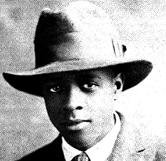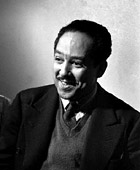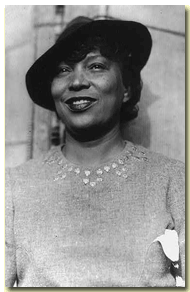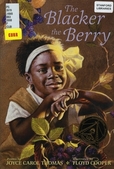Writers
Wallace Thurman (1902-1934)

Wallace Thurman
Within 10 years of arriving in Harlem he had many employments such as ghost writer, a publisher, an editor and a writer of novels, plays and articles. He became editor of The Messenger, a socialist journal aimed at blacks. He became the first to publish the adult-themed stories of Langston Hughes. Thurman left The Messenger to become editor of a white-owned magazine World tomorrow. He collaborated in publishing literary magazine Fire” a devotion to the younger negro artists.” It was a collaboration with Langston Hughes, Zora Neale Hurston, Richard Bruce Nugent, Aaron Douglas and Gwendolyn B. Bennett. With only one issue ever published , Fire challenged the ideas of W.E.B Du Bois and many African American bourgeoisie who believed that black art should serve as propaganda for social equality and racial integration. Thurman and other members of the “Niggerati” (deliberately ironic name Thurman used for young African American artists and intellectuals of the Harlem Renaissance) wanted to show real lives of African Americans , good and bad. He believed that black artists should be more objective in their writings and celebrate the arduous conditions of African American lives.
“Being a Negro writer these days is a racket and I'm going to make the most of it while it lasts. About twice a year I sell a story. It is acclaimed. I am a genius in the making. Thank God for this Negro literary renaissance. Long may it flourish!”
- Wallace Thurman
“Being a Negro writer these days is a racket and I'm going to make the most of it while it lasts. About twice a year I sell a story. It is acclaimed. I am a genius in the making. Thank God for this Negro literary renaissance. Long may it flourish!”
- Wallace Thurman
"Thurman's Harlem Renaissance is, thus, staunch and revolutionary in its commitment to individuality and critical objectivity: the black writer need not pander to the aesthetic preferences of the black middle class, nor should he or she write for an easy and patronizing white approval.~ Siggh and Scott
Langston Hughes (1902-1967)

Langston Hughes is one of the most well known names of the Harlem renaissance. He was a writer, whose pieces ranged from novels, to plays. He wrote short stories, children’s books, translations, and anthologies as well. However, his most well known pieces were his poems. Langston Hughes lived with his friends, the Reeds, after his grandmother died in 1910. He entered High School where he was very successful, and began to explore poetry. In 1921, Hughes went to Harlem and enrolled in Columbia University. He managed to be successful there, but he spent the majority of his time seeing Boradway shows. In 1922, he dropped out of Columbia and began to spend every waking moment in Harlem, supporting himself on odd jobs and writing. His writing reflected the idea that black culture should be celebrated, because it is just as valuable as white culture. He advocated many of these beliefs beliefs in his pieces. Some examples of these are “The Negro Artist and the Racial Mountain”, “Let America Be America Again”, “One Way Ticket”, and many others. On may 22, 1967, Langston Hughes died of cancer. He spent the majority of his life writing great literature, which is appreciated by all races, to this day.
Click here to read "My Adventures as a Social Poet" by Langston Hughes
Click here to read "My Adventures as a Social Poet" by Langston Hughes
Democracy: By Langston Hughes
Democracy will not come
Today, this year
Nor ever
Through compromise and fear.
I have as much right
As the other fellow has
To stand
On my two feet
And own the land.
I tire so of hearing people say,
Let things take their course.
Tomorrow is another day.
I do not need my freedom when I'm dead.
I cannot live on tomorrow's bread.
Freedom
Is a strong seed
Planted
In a great need.
I live here, too.
I want freedom
Just as you.
Zora Neale Hurston (1891-1960)

Zora Neale Hurston was born on January 7, 1891. Hurston was always interested in writing, and during the Harlem Renaissance, she befriended some very famous writers, such as Langston Hughes. By 1935, she had published a handful of short stories, articles, as well as a novel, Jonah’s Gourd Vine. Some of her most famous works were The Eyes Were Watching God, and Tell My Horse, which studied Caribbean Voodoo. Hurston wrote many pieces, using very distinct dialect to show African American culture (see quote below). One of her stories, “Spunk” was selected to be a part of The New Negro, which focused African and African American art and literature. Her main goal was merely to celebrate African American culture. She wrote to W.E.B Du Bois, who she gave the title “The Dean of American Negro Artists” to, and suggested to make a cemetery for the “illustrious Negro Dead”, on roughly 100 acres of land, in Florida, claiming that her people must be honored.
"Dat's a big ole resurrection lie, Ned. Uh slew-foot, drag-leg lie at dat, and Ah dare yuh tuh hit me too. You know Ahm uh fightin' dawg and mah hide is worth money. Hit me if you dare! Ah'll wash yo' tub uh 'gator guts and dat quick."
- Quote from Jonah's Gourd Vine
- Quote from Jonah's Gourd Vine

